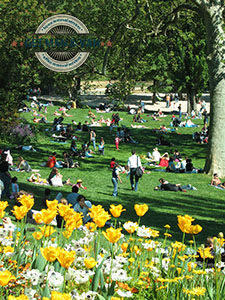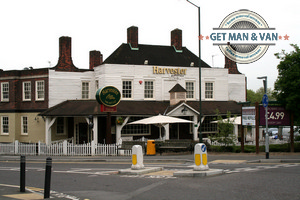It is no secret that Britain has some of the best city parks in the world. After all, the concept of the public open green space originates here in the 1840s, so this fact comes as no surprise. Urban parks are usually among the best loved and most frequented locales in cities, and what is more, as any experienced man and van specialist is going to tell you, they are also the places around which the most desirable residential properties are developed.
Let’s take a look at what is considered to be the best urban parks in Europe.
 The Parc des Buttes-Chaumont was built in the 19th century and occupies the territories to the north east of Paris’s city centre. It covers 61 acres, which does not make it anything near the largest city park in France’s capital, but it is still its best for sure. A local landmark that is an absolute must when you visit the park is the Temple de la Sibylle, which was fashioned after the Temple of Vesta in Tivoli, Italy.
The Parc des Buttes-Chaumont was built in the 19th century and occupies the territories to the north east of Paris’s city centre. It covers 61 acres, which does not make it anything near the largest city park in France’s capital, but it is still its best for sure. A local landmark that is an absolute must when you visit the park is the Temple de la Sibylle, which was fashioned after the Temple of Vesta in Tivoli, Italy.- Due to its very central location, Hyde Park is one of the best known public parks in London. It is one of the eight Royal parks in the city and the one that is most frequented by tourists – the estimates go into the millions. You can practice open water swimming, tennis, cycling and much more here. Serpentine Lake, Speakers’ Corner and the Diana, Princess of Wales Memorial Fountain are just a few of the notable landmarks on Hyde Park’s 350 acres territory.
- Park Maksimir is Zagreb, Croatia is a rather small development – surely much smaller than any other park that is featured on this list, but it is still worth including it on it for the simple reason of the biological diversity that is present on its territory. There are many endangered species living in Park Maksimir, and that is why it is designated as a nature reserve. What is more, the park has a preserved century-old oak forest, which is not common for even the largest urban green spaces in Western Europe.
- Villa Borghese was fashioned in the best traditions of English landscape gardening. It was built for the estate of the Borghese villa on the Pincian Hill in the Italian capital. It was redone in the 19th century from which period is the present arrangement as well. The villa itself houses a rich art collection that you should definitely check out if you have the chance to come here.
- Porto’s centre is occupied by an 8 hectares Crystal Palace Garden which was designed by the 19th century German landscape architect Emile David in order to complement the eponymous Palacio de Crystal. There is a forest, as well as balconies and a grand entrance to the park which make is one of Porto’s main attraction and for a good reason – it is a real manifestation of beauty in the best classical traditions of the term. Today it is also home to an Environmental Education Centre.
About the Author:
Prev: « The six golden rules of writing a work resumeNext: Seven Reasons to Live in London Beside Work and Education »



 The Parc des Buttes-Chaumont was built in the 19th century and occupies the territories to the north east of Paris’s city centre. It covers 61 acres, which does not make it anything near the largest city park in France’s capital, but it is still its best for sure. A local landmark that is an absolute must when you visit the park is the Temple de la Sibylle, which was fashioned after the Temple of Vesta in Tivoli, Italy.
The Parc des Buttes-Chaumont was built in the 19th century and occupies the territories to the north east of Paris’s city centre. It covers 61 acres, which does not make it anything near the largest city park in France’s capital, but it is still its best for sure. A local landmark that is an absolute must when you visit the park is the Temple de la Sibylle, which was fashioned after the Temple of Vesta in Tivoli, Italy.





